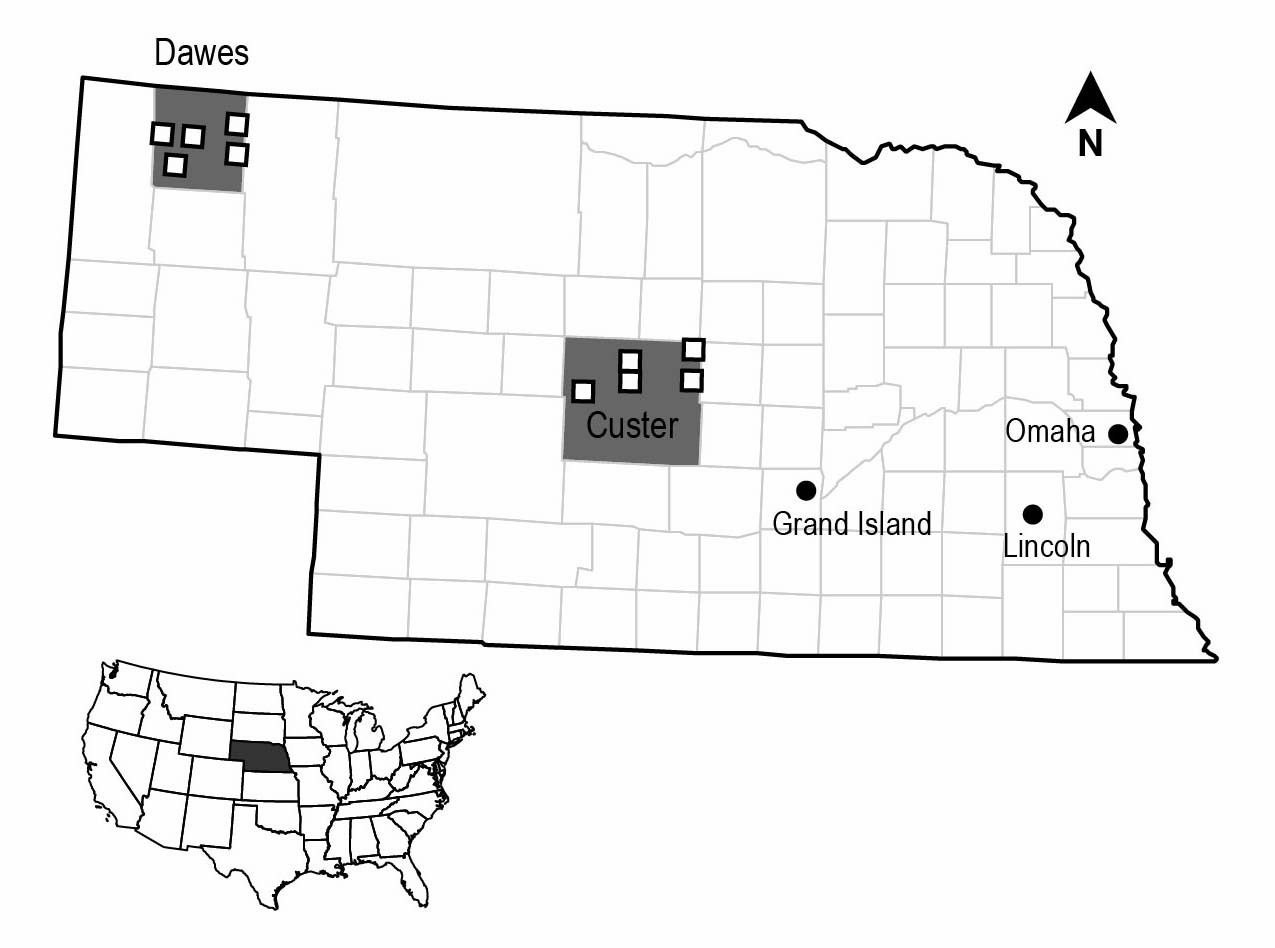Study Area

Chapters four, six and seven of Homesteading the Plains use data from a ten township Study Area in Nebraska, including 621 homesteaders in five townships in Custer County (T17N, R24W; T18N, R17W; T18N, R21W; T19N, R21W; and T20N, R17W) and five townships in Dawes County (T17N, R24W; T18N, R17W; T18N, R21W; T19N, R21W; and T20N, R17W). We chose these townships because the majority of the land had been transferred from the public domain via the Homestead Act. Land offices in Alliance, Broken Bow, Chadron, and Grand Island served claimants in the Study Area. The database includes all homesteaders in these townships who successfully proved up.
Settlers began arriving in the five Custer County townships in 1878, sparking a period of settlement that would see 324 successful claims proved up by 1908. These homesteaders ranged from 25 to 83 years of age, with 55.6 percent filing their final claims between the ages of 25 and 39. 292 men and 32 women filed claims in the Custer townships. A majority, 253 of the 324, or 78.1 percent, had been United States citizens before making their claim.
In the five Dawes County townships, the 297 successful claimants settled the area between 1887 and 1908. Their ages ranged from 21 to 87, with 54.5 percent of them proving up when they were between the ages of 25 and 39. There were 265 men and 32 women, the same number of women as in Custer County. Of the 297 homesteaders, 238 or 80.2 percent were citizens; the remaining 59, or 19.8 percent, were non-citizens.
To date, this is the most extensive and sustained homesteading study area. We use the data to interrogate the prevalence of fraud, to examine the role of women homesteaders, and to map community formation through GIS and network analysis
.NOTE: All of the homestead records we used are made available through Fold3.com's digitization efforts.

